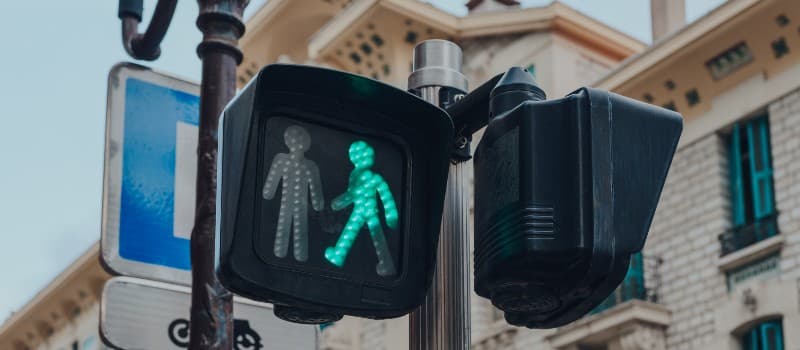
Is it time to consider more LTNs across the UK?
21st Nov, 2022
By now, you’re probably at least passingly familiar with the term CAZ – otherwise known as a Clean Air Zone, an area where specific measures have been implemented to curb harmful emissions levels. However, you may not be quite as familiar with the term LTN, even though in many ways it shares some of the same broad aims as a CAZ.
LTN stands for Low Traffic Neighbourhood, where measures like planters, semi-permanent bollards and dedicated cameras are used to reduce the levels of through traffic in neighbourhoods. The basic idea is to discourage driving, while making walking and cycling more pleasant – an idea that might appeal if you’ve ever decided to scrap your car for a two-wheeled alternative!
Now, as with any major change to a local community, it has its advocates and its critics. But is it something that we should be seeing more of throughout the UK?
Who benefits from LTNs?
In short, local residents. Low Traffic Neighbourhoods are designed with a number of aims in mind, but one of their core priorities is to combat what’s called rat-running. This is the term used to refer to drivers essentially using residential streets as shortcuts, helping them dodge round longer queues on main roads that are designed to handle larger volumes of traffic. And while it might be a handy method for drivers, it can often have a severe impact on the lives of the residents themselves.
Primarily, it’s the most badly-behaved drivers who can cause the most misery. Speeding is not uncommon, and it’s exceptionally dangerous given how narrow most residential streets are. It makes it far more fraught for pedestrians to cross their own roads – even on dedicated pedestrian crossings – and cyclists can often find themselves forced onto pavements to avoid drivers who aren’t giving them the proper clearance.
Rat-running drivers frequently get in each other’s way too, so residents have to contend with loud road rage arguments – which is particularly stressful if they’re trying to get home after a tough day at work themselves.
Amongst all this, it’s also worth noting that there’s evidence to suggest rat-running doesn’t actually save drivers all that much time. In Greenwich, for example, which was the site of an experimental LTN until February this year, one resident and campaigner observed that: “…speeding cars only ever gained the illusion of quicker journey times; they always had to queue to get back on or off the A2, after dodging through the bustling residential streets of Greenwich.”
Finally, there’s the UK’s commitment to its Net Zero target to bear in mind; many campaigners are convinced we’ll only be able to reach it with a sizeable number of people hopping out of the driver’s seat, and into the cycling saddle.
But is it really that simple?
As you might expect, there are plenty of drivers who don’t really see the problem with using any means available to avoid gridlock to help them get to their destination, as long as they’re driving sensibly and mindful of the conditions.
There were also reports that the Greenwich LTN made things difficult for tradespeople, who pointed out that without access to local roads, they struggle to reach homes quite as easily. On that note, there’s a raft of people who need their cars for their jobs, such as carers, who can be impacted by LTNs.
Ultimately, Greenwich’s local council decided to axe the scheme back in February of this year, mostly because several new councillors were not convinced that LTNs were in the best interests of the community in the long run. One councillor said that while they can make life easier and more pleasant for locals in the immediate vicinity, they don’t actually solve the traffic problem – simply displacing through traffic to other local areas which might not be quite as fortunate as to have an LTN of their own.
To be honest, part of this conversation might seem familiar by this stage – lots of it all comes down to the fact that we should all probably be driving less where we can. Right now, there’s no evidence that’s happening. In fact, the number of cars on UK roads has increased by 42.5% in the past few decades, and if that pace continues, the number of cars we own could well reach 45 million by 2045.
With the UK’s current climate contributions under scrutiny at COP26, it’s something that’s likely to become more and more prominent in the national conversation from this point forwards!
We’ll leave you to ponder that one. And whether you’re thinking of going car-free yourself, or you just need to get rid of your old banger, we’re here to help!
When you choose us, we’ll make sure to connect you with the nearest local scrapyard with the very best prices, so that they can pop by and pick up your car right from your driveway, without any travel costs or logistics cutting into the cash amount you’ll get.
Don’t just take our word for it – get an instant online quote today! It’s free, and there’s zero obligation until you decide you’re ready to proceed. Just enter your car reg and postcode into the fields on our site, and within seconds you’ll be looking at your very own instant online quote. Ready to find out how much your car is worth?